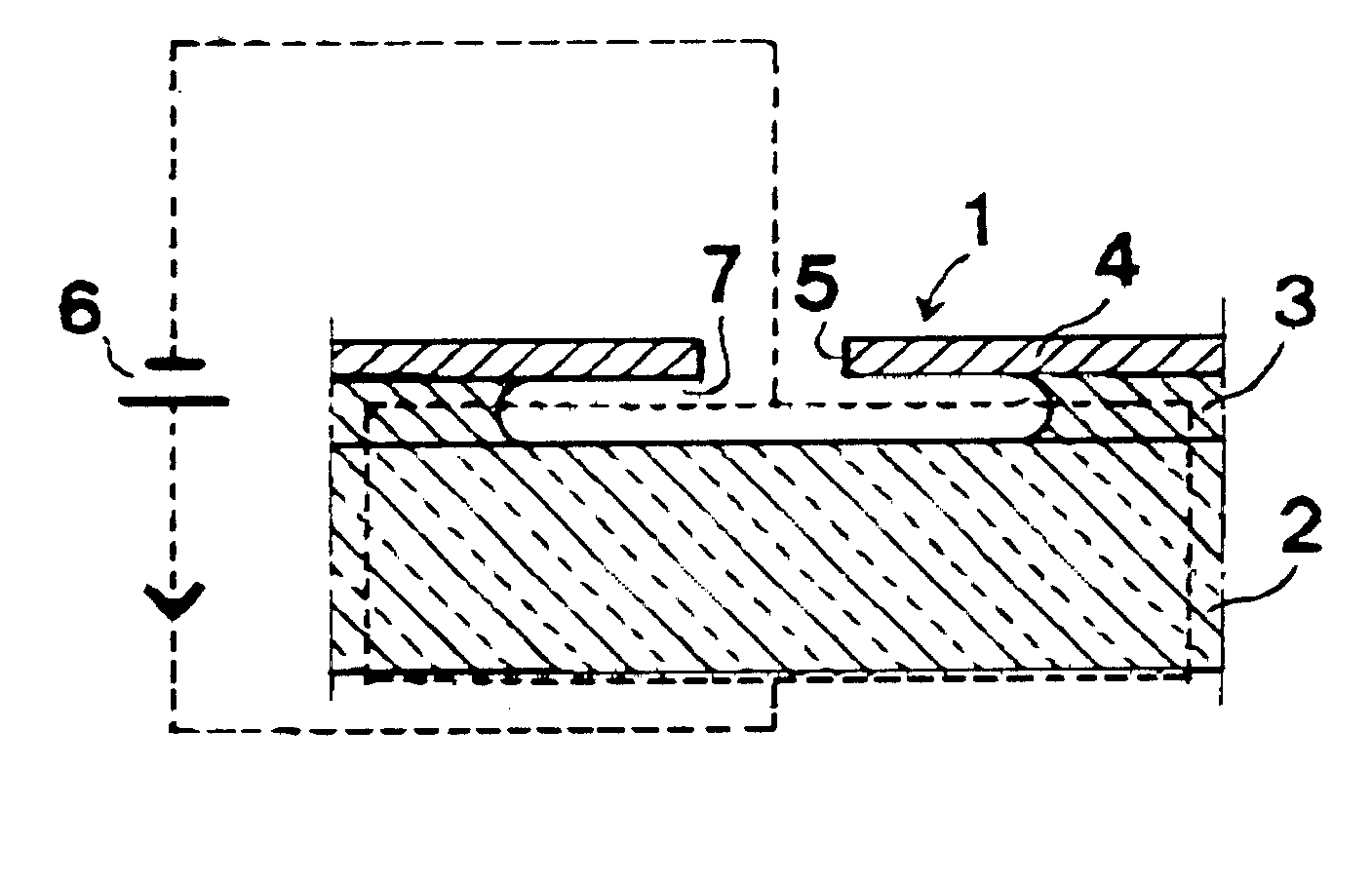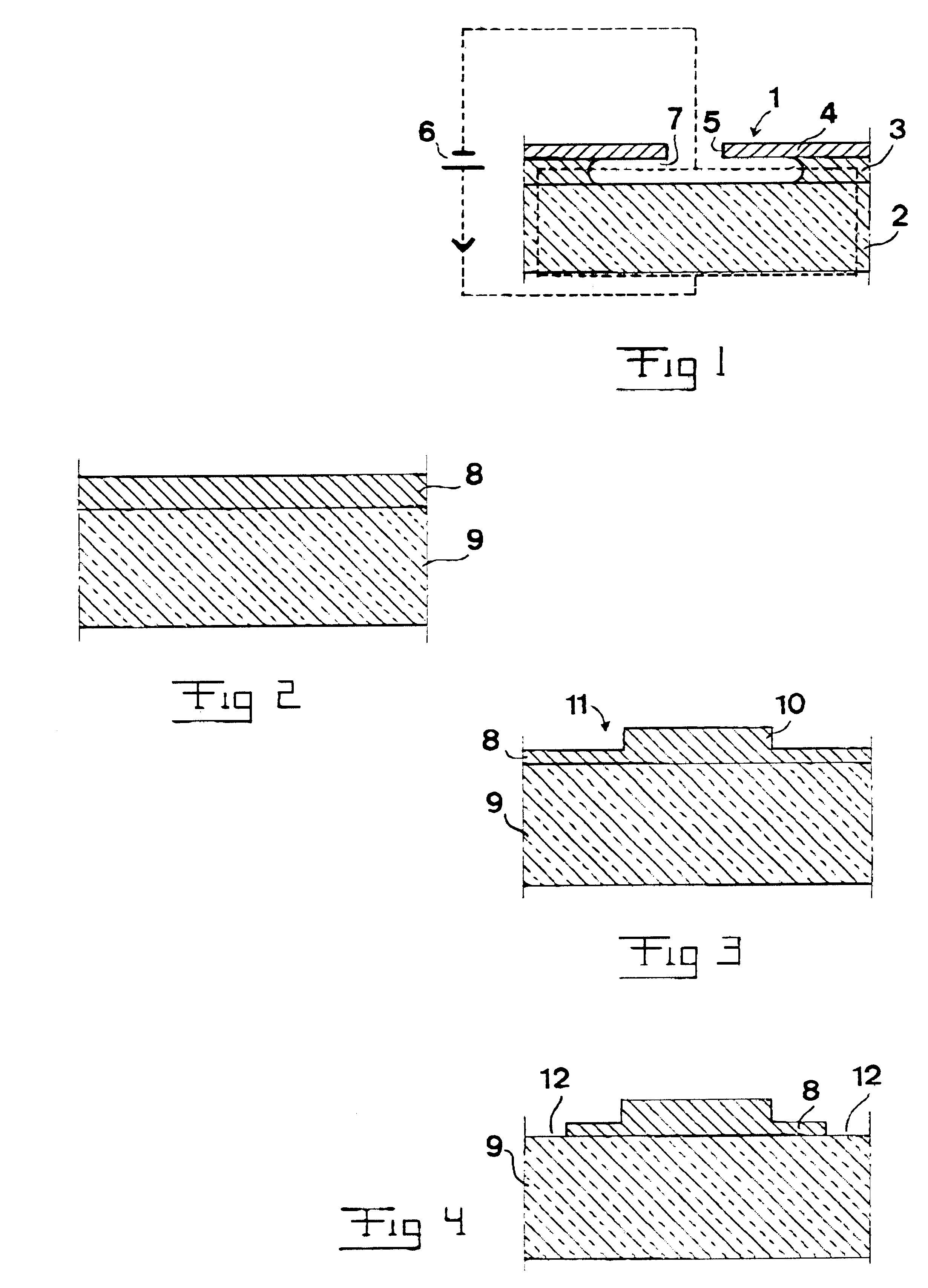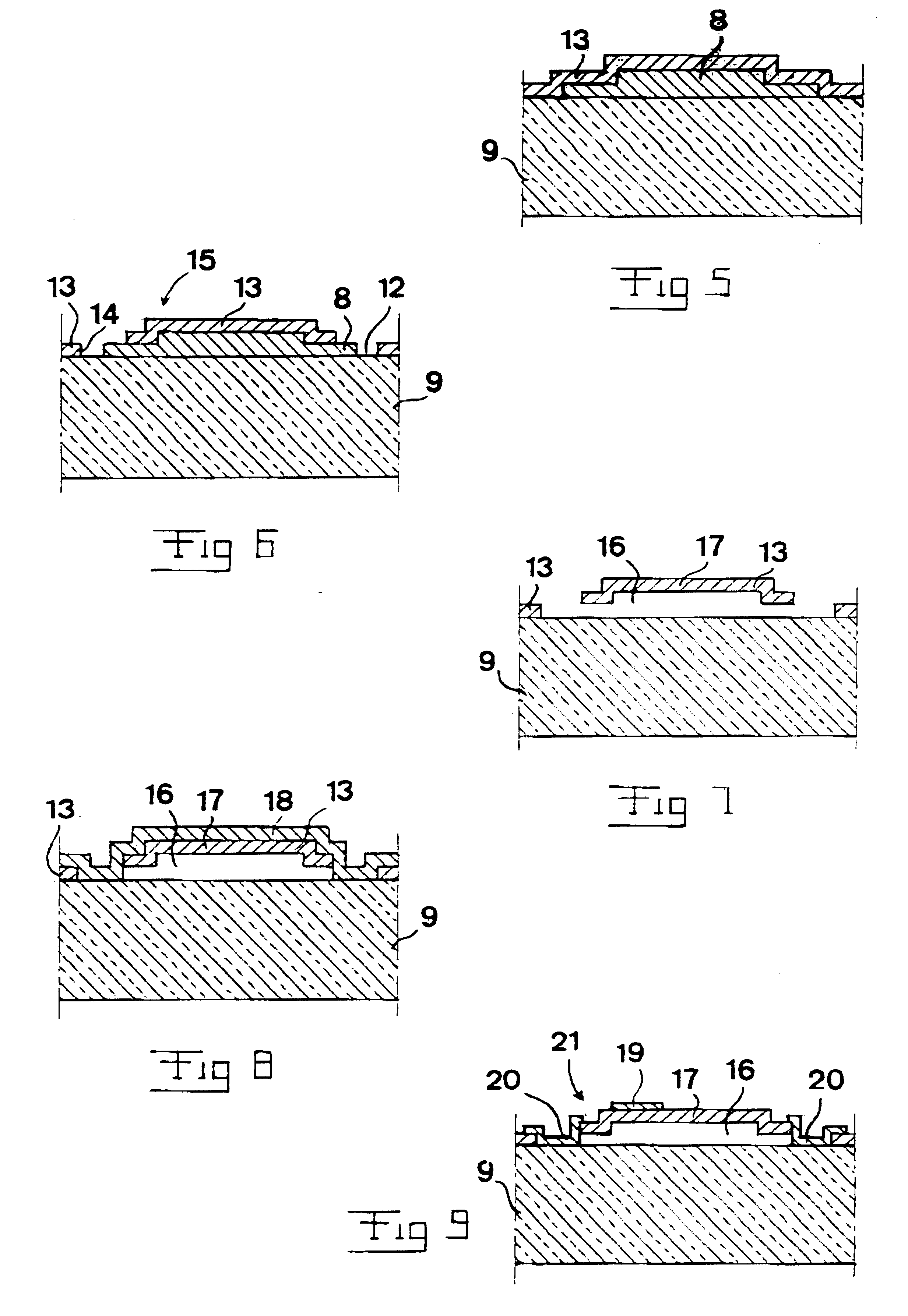Method of producing a semiconductor device of SiC
a semiconductor device and selective etching technology, applied in the direction of piezoelectric/electrostrictive devices, microstructured devices, electrical apparatus, etc., can solve the problems of poor directionality of photoelectrochemical etching process, leakage current at the junction between sic and sic conductor at temperatures around 300.degree. c, and achieve good results
- Summary
- Abstract
- Description
- Claims
- Application Information
AI Technical Summary
Benefits of technology
Problems solved by technology
Method used
Image
Examples
Embodiment Construction
FIG. 1 illustrates in a schematic way a method for etching SiC according to the invention. A multilayer structure 1 of SiC, shown in cross-section in FIG. 1, comprises a first layer 2 of p-type SiC having a first doping concentration, a second layer 3 of p-type SiC being in contact with the first layer 2 and having a second doping concentration, and a third layer 4 of n-type SiC. The doping concentration of the second p-type layer 3 is higher than the doping concentration of the first p-type layer 2. The second p-type layer 3, which constitutes the p-type layer to be etched, is located between the first p-type layer 2 and the third n-type layer 4. In FIG. 1 it is schematically illustrated that an opening 5 is formed in the third layer 4 so as to make it possible to bring the second layer 3 into contact with an etching solution. The first layer 2 is connected to the anode of a source of electric current 6, schematically indicated in FIG. 1, and the multi-layer structure 1 is placed i...
PUM
 Login to View More
Login to View More Abstract
Description
Claims
Application Information
 Login to View More
Login to View More - R&D
- Intellectual Property
- Life Sciences
- Materials
- Tech Scout
- Unparalleled Data Quality
- Higher Quality Content
- 60% Fewer Hallucinations
Browse by: Latest US Patents, China's latest patents, Technical Efficacy Thesaurus, Application Domain, Technology Topic, Popular Technical Reports.
© 2025 PatSnap. All rights reserved.Legal|Privacy policy|Modern Slavery Act Transparency Statement|Sitemap|About US| Contact US: help@patsnap.com



